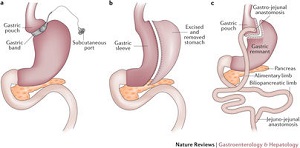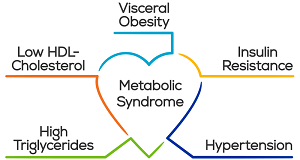Call for Abstract
Scientific Program
11th World Congress on Endocrinology and Metabolic Disorders, will be organized around the theme “”
Endocrinology Congress 2018 is comprised of 20 tracks and 105 sessions designed to offer comprehensive sessions that address current issues in Endocrinology Congress 2018.
Submit your abstract to any of the mentioned tracks. All related abstracts are accepted.
Register now for the conference by choosing an appropriate package suitable to you.
|
Endocrinology is the branch of biology and medicine dealing with the endocrine system, its diseases and its specific secretions known as hormones, growth promotion and malignancy. Behavioral endocrinology is the study of hormonal processes and neuroendocrine systems that influence or regulate behavior. Endocrinology includes the wide area that not only affects our endocrine system but also has effects on the skin which shows indirectly involvement of dermatology.Metabolism is the set of life-sustaining chemical transformations within the cells. The main purposes of metabolism are the conversion of fuel to energy to run cellular processes, the conversion of fuel to building blocks for proteins, lipids, nucleic acids, and some carbohydrates, and the elimination of nitrogenous wastes. |

- Track 1-1Hormones
- Track 1-2Metabolic Engineering
- Track 1-3Metabolic Bone Diseases
- Track 1-4Comparative endocrinology
- Track 1-5Clinical endocrinology
- Track 1-6Obesity and metabolic syndrome
- Track 1-7Xenobiotics and Redox Metabolism
- Track 1-8Metabolic Acidosis
Metabolic syndrome is a medical disorder that may lead to cardiovascular disease and diabetes. Metabolic syndrome is a Group of conditions increased blood pressure, a high blood sugar level, excess body fat around the waist and abnormal cholesterol levels that occur together, increasing your risk of heart disease, stroke, and diabetes. Genetic factors influence each individual component of the syndrome, and the syndrome itself. A family history that includes type 2 diabetes, hypertension, and early heart disease greatly increases the chance that an individual will develop the metabolic syndrome. Most of the disorders associated with metabolic syndrome have no symptoms, although a large waist circumference is a visible sign. If your blood sugar is very high, you might experience signs and symptoms of diabetes including increased thirst and urination, fatigue, and blurred vision.
- Track 2-1Pathophysiology of metabolic syndrome
- Track 2-2Signs and symptoms
- Track 2-3Causes of metabolic syndrome
- Track 2-4Risk factors associated with metabolic syndrome
- Track 2-5Diagnosis, treatments and medications
- Track 2-6Nursing care and paedetretic
Insulin, the hormone delivered by the beta cells in the pancreas, permits (glucose) cells to have the capacity to utilize glucose. The abundance sugar stays in the blood and is then evacuated by the kidneys. This sickness happens in a few structures, yet the most well-known are Type I Diabetes or Juvenile Onset Diabetes or Insulin-Dependent Diabetes Mellitus (IDDM), Type II or Non-Insulin Dependent Diabetes Mellitus (NIDDM), and Gestational.
- Track 3-1Type 1 diabetes and Type 2 diabetes
- Track 3-2Hypoglycemia & Hyperglycemia
- Track 3-3Prediabetes
- Track 3-4Malnutrition
- Track 3-5Diabetes and its Complications
- Track 3-6Post-Pancreatectomy diabetes
- Track 3-7Cystic fibrosis-related diabetes
- Track 3-8Steroid-induced diabetes
Adrenal glands are small glands located on top of each kidney. They produce hormones that you can't live without, including sex hormones and cortisol. Cortisol helps you respond to stress and has many other important functions. In Cushing's syndrome, there's too much cortisol, while with Addison's disease, there is too little. Thyroid gland influences almost all of the metabolic processes in your body. Thyroid disorders can range from a small, harmless goiter (enlarged gland) that needs no treatment to life-threatening cancer. Too much thyroid hormone results in a condition known as hyperthyroidism. Insufficient hormone production leads to hypothyroidism
- Track 4-1Adrenal disorders
- Track 4-2Thyroid disease and Parathyroid Disorders
- Track 4-3Thyroid hormones, Stem cells and Proliferation
- Track 4-4Disorders of Calcium Metabolism and Vitamin-D Deficiencies
- Track 4-5Thyroid Tumors

Nervous and endocrine systems often act together in a process called neuroendocrine integration, to regulate the physiological processes of the human body. Neuroendocrinology arose from the recognition that the brain, especially the hypothalamus, controls secretion of pituitary gland hormones, and has subsequently expanded to investigate numerous interconnections of the endocrine and nervous systems.
- Track 5-1Neuroendocrine and types of Cancer
- Track 5-2Behavioral Neuroendocrinology
- Track 5-3Idiopathic Short Stature
- Track 5-4Growth hormone deficiency and growth disorders
- Track 5-5Neuroendocrine Pancreatic cancer
- Track 5-6Hormone Therapy for Hypo secretion

Reproductive endocrinology and infertility specialists primarily focus on the treatment of infertility, reproductive endocrinologists are trained to also evaluate and treat hormonal dysfunctions in females and males outside infertility. Reproductive endocrinologists have specialty training in obstetrics and gynecology (ob-gyn) before they undergo sub-specialty training in Reproductive endocrinology and infertility.
- Track 6-1Placental Endocrinology
- Track 6-2Ovarian Disorders
- Track 6-3Gestational Diabetes- Treatment and care
- Track 6-4Low Testosterone
- Track 6-5Hyper androgenism in women
- Track 6-6Endocrinology of fertility
- Track 6-7Hormonal Changes and its effects
- Track 6-8Oral contraceptives and polycystic ovary syndrome

Endocrinology plays a vital role in the field of Dermatology. Metabolic and Endocrine diseases can produce changes in the skin. The most common cutaneous manifestations of diabetes mellitus are the bullous diabetic forum, acanthosis nigricans, diabetic dermopathy, and necrobiosis lipoidica diabetic rum. Tophi can develop in patients with chronic untreated gout. Calcinosis cutis encompasses a group of disorders in which calcium deposits form in the skin; the four major types are dystrophic, metastatic, iatrogenic, and idiopathic. Xanthomas can reflect lipid metabolism alteration associated with hyperlipidemia, or they can result from local cell dysfunction.
- Track 7-1Pediatric dermatology
- Track 7-2Diet and dermatology
- Track 7-3Insulin and skin complications
- Track 7-4Acanthosis nigricans
- Track 7-5Diabetic blisters and eruptive xanthomatosis

Pediatric endocrinologists are usually the primary physicians involved in the medical care of infants and children with intersex disorders. The specialty also deals with hypoglycemia and other forms of hyperglycemia in childhood, variations of puberty, as well other adrenal, thyroid, and pituitary problems. Many pediatric endocrinologists have interests and expertise in bone metabolism, lipid metabolism, adolescent gynecology, or inborn errors of metabolism.
- Track 8-1Androgens, cognition, and social behaviour in children
- Track 8-2Childhood Obesity
- Track 8-3Pheochromocytomas
- Track 8-4Ambiguous Genitalia
- Track 8-5Hypospadias
- Track 8-6Problems with Vitamin D

Nurses treat infants to adults with delayed growth and development, and diseases like diabetes, hypoglycemia, and endocrine gland disorders including adrenal, thyroid and pituitary problems. As an Endocrinology Nurse, Endocrine Nurses help to develop treatment plan and care. Since one of the most common diseases in pediatric endocrinology is juvenile diabetes, Nurses play an important role in teaching children and their parents about the effects of diabetes, and help them make healthy lifestyle choices
- Track 9-1Rare Endocrine Conditions
- Track 9-2Hormones and Cell Regulation
- Track 9-3Disorders of Sex Development
- Track 9-4Interphase bone and Glucose
- Track 9-5Pelvic Inflammatory Disease
- Track 9-6Delayed Puberty and Precocious Puberty



Endocrine glands are a group of glands in the body which secrete hormones. The endocrine system influences how your heart beats, how your bones and tissues grow, even your ability to make a baby. It plays a vital role in whether or not you develop diabetes, thyroid disease, growth disorders, sexual dysfunction, and a host of other hormone-related disorders. Endocrine disorders are typically grouped into two categories: A. Endocrine disease that results when a gland produces too much or too little of an endocrine hormone, called a hormonal imbalance. B. Endocrine disease due to the development of lesions (such as nodules or tumors) in the endocrine system, which may or may not effects on hormone levels.
- Track 10-1Cushing’s syndrome
- Track 10-2Polycystic ovary syndrome
- Track 10-3Hypothyroidism and Hyperthyroidism
- Track 10-4Growth hormone deficiency and growth disorders
- Track 10-5Follicular and Medullary thyroid cancer


- Track 11-1Informatics in the Service of Medicine; Telemedicine, Software and other Technologies
- Track 11-2New Technologies for Treating Obesity and Preventing Related Diabetes
- Track 11-3Adolescent Weight Loss (Bariatric) Surgery

Case study is an important part for research and treatment. Clinical case study aims directly improve global health outcomes and share clinical knowledge using case reports to convey important best practice messages. If case study is done then the advanced medical technologies like transplantation, holistic treatment can be used more rapidly in hospitals and with the more study in Glycemic index and load we can find the diseases or problem like Cortisol . Even with this, we can know the number of people by using Diabetes Statistics having diseases and can find by advances in diabetes cure. Drug mechanism can be known and along with these new technologies as well pharmacotherapy can be done. Clinical case study done in medical diabetes could leads to find innovative way for treating the diabetes.
- Track 12-1Clinical Trials on Animal Models
- Track 12-2Translational research in endocrinology
- Track 12-3Gender Management Service
- Track 12-4Insulin Syringes, Pumps and pen

Hormones help the body regulate processes, such as appetite, breathing, growth, fluid balance, feminization and virilization, and weight control. Common endocrine disorders include diabetes mellitus, acromegaly, Addison’s disease, Cushing’s syndrome, Graves’ disease, Hashimoto’s thyroiditis, hyperthyroidism, hypothyroidism, and prolactinoma. These disorders often have widespread symptoms, affect multiple parts of the body, and can range in severity from mild to very severe. Treatments depend on the specific disorder but often focus on adjusting hormone balance using synthetic hormones.
- Track 13-1Endocrine disorders and prevention
- Track 13-2Erythropoietin, Adipo-cytokines, Orexins
- Track 13-3Endocrine Myopathies
- Track 13-4Multiple Endocrine Neoplasia
- Track 13-5Exocrine Pancreatic Insufficiency
- Track 13-6Prostate cancer- Treatment and prevention
- Track 14-1Acid-base imbalance
- Track 14-2Metabolic brain diseases
- Track 14-3Calcium metabolism disorders
- Track 14-4DNA repair-deficiency disorders
- Track 14-5Glucose metabolism disorders
- Track 14-6Hyperlactatemia
- Track 14-7Iron metabolism disorders
- Track 14-8Mitochondrial diseases
- Track 14-9Phosphorus metabolism disorders
- Track 14-10Porphyrias
- Track 14-11Proteostasis deficiency
The metabolic disorder occurs when abnormal chemical reactions in the human body disrupt metabolism. When this happens, the patient may have too much of some substances, or too little of others, which are needed to stay healthy. Metabolic disorders or inborn errors of metabolism (IEM) result from a block (partial or complete) to an essential pathway in the body's metabolism. Childhood obesity has contributed to an increased incidence of type 2 diabetes mellitus and metabolic syndrome among children. Disorders in metabolism can be inherited, in which case they are also known as inborn errors of metabolism. Inherited metabolic disorders may affect about 1 in 1,000 to 2,500 new born. In most inherited metabolic disorders, a single enzyme is either not produced by the body at all or is produced in a form that doesn't work. Depending on that enzyme's job, its absence means toxic chemicals may build up, or an essential product may not be produced.
- Track 15-1Hunter syndrome
- Track 15-2Gaucher disease
- Track 15-3Tay-Sachs disease
- Track 15-4Galactosemia
- Track 15-5Adrenoleukodystrophy
- Track 15-6Maple syrup urine disease
- Track 15-7Cardiomyopathy

Metabolic responses and Nutrition focuses on the integration of nutrition, exercise physiology, clinical investigations, and molecular and cellular biochemistry of metabolism. The areas of interest of Nutrition & Metabolism encompass studies in obesity, diabetes, lipidemias, metabolic syndrome and exercise physiology that have an underlying basis in metabolism. In persons with type 2 diabetes, protein ingestion results in little or no increase in plasma glucose concentrations but a stimulation of insulin and glucagon secretion. The nutritional requirements of a neonate are significantly greater than those of an adult because not only are there requirements for substrate intake to fulfill basic metabolic needs, but there are metabolic needs to maintain rapid and continued growth and development.
- Track 16-1Metabolic response and nutritional support in traumatic brain injury
- Track 16-2Metabolic response to hypoxia
- Track 16-3Nutrition and Metabolic response in Health and Disease
- Track 16-4Response to ingested glycine
- Track 16-5Metabolic Response Modifers
- Track 16-6Response to Acute Spinal-Cord Injury

Diabetes and Obesity is the most challenging health problems in the 21st century and one of the most common non-communicable diseases globally. It is the 4th or 5th leading cause of death in most high-income countries, with ~366 million diabetics in 2011 and an estimated 552 million in 2030. On the other hand, obesity has also become a world-wide epidemic. Obesity is a risk factor for the development of insulin resistance, with pancreatic beta cells compensating for insulin resistance by augmenting insulin secretion. The failure of beta-cells is believed to cause pre-diabetes, a condition that can lead to diabetes". Approximately 85% of people with diabetes are type 2, and of these, 90% are obese or overweight. Diabetes & obesity are major contributors to various other chronic diseases such as coronary artery diseases, myocardial infarction, hypertension, dyslipidemia and a number of other complicated disorders
- Track 17-1Dietary and Lifestyle changes
- Track 17-2Weight loss Medications
- Track 17-3Diabetes and Its Complications
- Track 17-4Case study and reports
- Track 17-5Metaflammation

A hormone disorder such as polycystic ovary syndrome (PCOS), a condition in which the female body produces too much of certain hormones, is associated with metabolic syndrome. In the metabolic syndrome (MS), a condition that associates three or more pathologies such as hypertension, central obesity, type II diabetes, insulin resistance and dyslipidemias, the kidneys are severely affected. The pathological alterations in the kidneys, associated with Metabolic Syndrome, may be modified by sex hormone levels.

Energy metabolism is the process of generating energy (ATP) from nutrients. Metabolism comprises a series of interconnected pathways that can function in the presence or absence of oxygen. Aerobic metabolism converts one glucose molecule into 30-32 ATP molecules. The syndrome is thought to be caused by an underlying disorder of energy utilization and storage. Muscle cells need a lot of energy, which means they burn a lot of calories. In fact, they burn more calories than fat cells, even when you're not exercising. So the time you spend working out reaps benefits long after you stop sweating. Exercise becomes even more important as you get older. You naturally lose muscle mass with age, which slows down your metabolism.

Healthy eating is one of the best things you can do to prevent and control health problems such as heart disease, high blood pressure, type 2 diabetes, and some types of cancer. Weight management is a long-term approach to a healthy lifestyle. It includes a balance of healthy eating and physical exercise to equate energy expenditure and energy intake. Developing healthy eating habits while using tips that will keep us fuller longer can be useful tools in weight management. Knowing what your body needs is important to weight management and can control overconsumption and under consumption of food. Weight management does not include fad diets that promote quick, temporary weight loss. It focuses on the long-term results that are achieved through slow weight loss, followed by retention of an ideal body weight for age, sex and height







